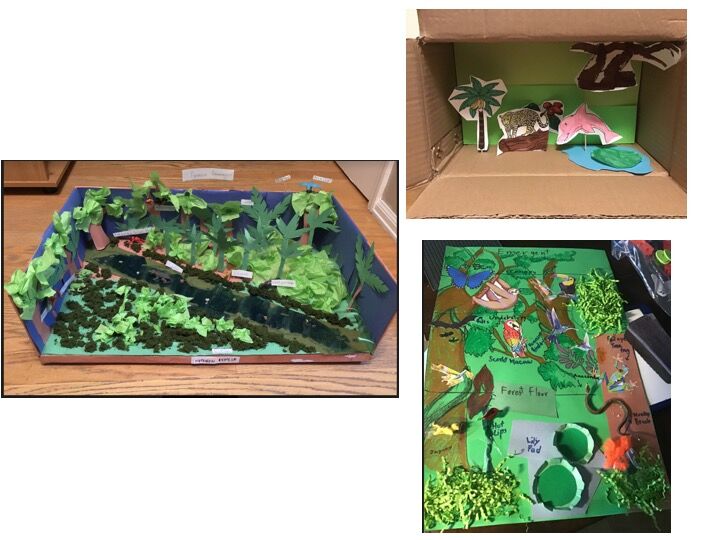First graders have been hard at work in Idea Lab! We began the year getting to know each other and talking about why we come to Idea Lab. We read the book, Rosie Revere Engineer, a fun story about a girl who dreams of becoming a great engineer. In the story, Rosie encounters many challenges when trying to create an invention. A visit from her great-great-aunt Rose shows her that a first flop isn’t something to fear—it’s something to celebrate.

Students were challenged to create something to represent themselves that no one else would make-- the catch was that they all received the same materials in a bag. How can you create something unique that no one else would make out of the same supplies? Students had fun creating, and we had fun getting to know each other through our creations! They came up with some very creative representations!
 During our second week, students read the book, Grandfather Tang's Story. Grandfather Tang and his grandaughter, Little Soo, create a story using their tangrams (ancient Chinese puzzle pieces) about two fox fairies that have the ability to change themselves into the shapes of any animals they choose. After experimenting with tangram puzzles, students created their own tangram characters and wrote stories involving their characters.
During our second week, students read the book, Grandfather Tang's Story. Grandfather Tang and his grandaughter, Little Soo, create a story using their tangrams (ancient Chinese puzzle pieces) about two fox fairies that have the ability to change themselves into the shapes of any animals they choose. After experimenting with tangram puzzles, students created their own tangram characters and wrote stories involving their characters. In first grade, students are introduced to the P.E.T.S. specialists of Crystal Pond Woods. P.E.T.S. stands for Primary Education Thinking Skills. Dudley the Detective, Isabel the Inventor, Sybil the Scientist, Yolanda the Yarnspinner, Max the Magician, and Jordan the Judge will help us learn about each kind of thinking. The students will use convergent analysis, divergent synthesis, visual/spatial thinking, and evaluation skills during these different challenges. We will continue to ask ourselves: What areas of thinking come easily and naturally for me? What are some areas that I can work on improving?
In first grade, students are introduced to the P.E.T.S. specialists of Crystal Pond Woods. P.E.T.S. stands for Primary Education Thinking Skills. Dudley the Detective, Isabel the Inventor, Sybil the Scientist, Yolanda the Yarnspinner, Max the Magician, and Jordan the Judge will help us learn about each kind of thinking. The students will use convergent analysis, divergent synthesis, visual/spatial thinking, and evaluation skills during these different challenges. We will continue to ask ourselves: What areas of thinking come easily and naturally for me? What are some areas that I can work on improving?
We are beginning our thinking challenges with Dudley the (dog) Detective, convergent/deductive thinker who uses clues to find the right answers. Students will use a lot of logic and deductive reasoning for these activities. Students learn that it is ok if they do not see the answer right away. The students take time to reflect and learn to be patient and avoid jumping to incorrect conclusions.
 The students are learning how to use clues and their deductive reasoning to eliminate possibilities and deduce the correct answers in a logic puzzle.
The students are learning how to use clues and their deductive reasoning to eliminate possibilities and deduce the correct answers in a logic puzzle.

The students' work ethic and commitment is impressive in the first-grade Idea Lab group! I look forward to getting to know this group even better and continue to stretch our brains with different types of thinking!
 We will update you on the different types of thinking and activities we encounter throughout the year!
We will update you on the different types of thinking and activities we encounter throughout the year!
































